Withywindle Mill
A 1/76th 4mm to the foot scale (009) pizza style small narrow gauge railway layout
Withywindle Mill is a run down and decrepit Fulling Mill. Fulling involved two processes - scouring and milling (thickening). These are followed by stretching the cloth on great frames known as tenters, as can be seen to the right of the mill, and held onto those frames by tenterhooks. It is from this process that we derive the phrase being on tenterhooks as meaning to be held in suspense. The area where the tenters were erected was known as a tenterground.
Originally, this was literally pounding the cloth with the fuller's feet (whence the description of them as 'walkers'), or with his hands or a club. However, from the medieval period, it was often carried out in a water mill.
Scouring and thickening
In Roman times, fulling was conducted by slaves standing ankle deep in tubs of human urine and cloth. Urine was so important to the fulling business that urine was taxed. Urine (known as 'wash') was a source of ammonium salts, and assisted in cleansing the cloth.
By the medieval period, fuller's earth had been introduced. This is a naturally-occurring soft clay-like material occurring in nature as an impure hydrous aluminium silicate. This seems to have been used in conjunction with 'wash'. More recently, soap has been used.
The second function of fulling was to thicken the cloth, by matting the fibres together to give it strength. This was vital in the case of woollens, made from short staple wool, but not worsteds made from long staple wool. At this stage, the liquid used was water, thus rinsing out the evil-smelling liquor used during cleansing.
Fulling Mills
From the medieval period, the fulling of cloth was often undertaken in a water mill, known as a fulling mill (also as walk mills or tuck mills). In Wales, a fulling mill is a pandy. In these, the cloth was beaten with wooden hammers, known as fulling stocks. The cloth was taken out about every two hours to undo plaits and wrinkles. The first reference to a fulling mill so far discovered was in Normandy about 1086. The first in England occurs in the Winton Domesday of 1117-19. Others belonged to the Knights Templar by 1185. They became widespread during the 13th century, and occur in most counties of England and Wales, but were largely absent in areas only making worsteds
The railway
The narrow gauge railway that passes Withywindle Mill ambles past at the same rate as the stream wanders past the mill. Occasionally the locomotive stops so eth driver can have a chat with the miller or to drop something off for him.
Construction of Withywindle Mill pizza layout
I worked on building a 500mm square baseboard with the circular layout on top. This was so that i could build a box for the layout to slide into for transport and staroage - and it has worked extreamly well.
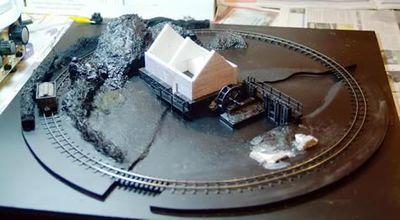
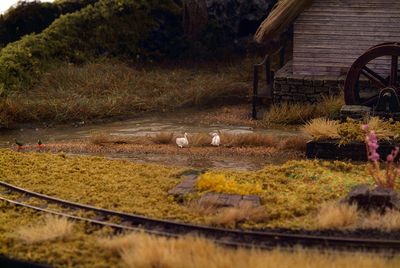
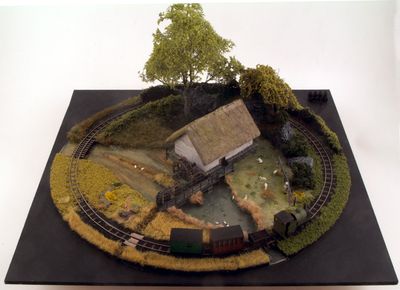
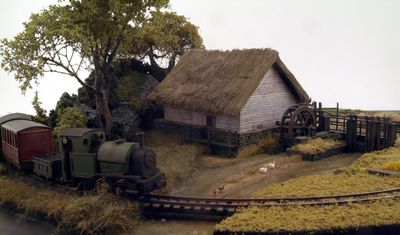
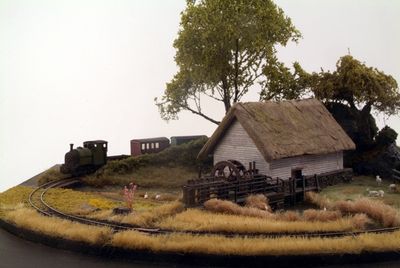
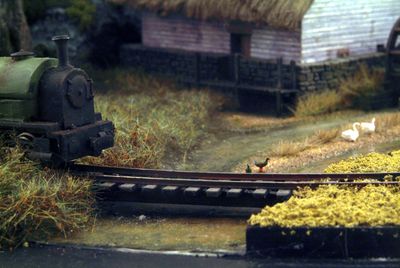
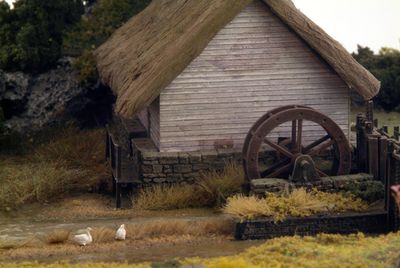
Posts about Withywindle Mill
-
Withywindle Mill - the pizza layout
on Thu, Apr 26, 2007 ~ Modelling
A new layout - Withywindle Mill is a pizza layout, small and round.. -
Withywindle Mill progress
on Wed, Jun 27, 2007 ~ Modelling
Progress on the new layout Withywindle Mill . -
Withywindle mill in Narrow Gauge Modeller December 2007
on Sat, Nov 17, 2007 ~ Modelling
Withywindle mill in Narrow Gauge Modeller December 2007. -
Withywindle mill wins ExpoNG Pizza challenge
on Sat, Nov 17, 2007 ~ Modelling
Withywindle mill won the ExpoNG Pizza challenge.